In this article, we’ll provide details regarding one of Ethereum’s popular testnets, Sepolia, and its crucial development tool, the Sepolia testnet faucet. We will look at these components from a broad perspective and examine how developers can work with them. To integrate Sepolia and use the Sepolia testnet faucet, you must complete the following steps:
- Change the default chain from Ethereum to Sepolia:
Moralis.start({
apiKey: 'YOUR_API_KEY',
defaultEvmApiChain: EvmChain.SEPOLIA
})
- Next, you must obtain your Web3 API key and replace “YOUR_API_KEY”. To do so, create a Moralis account, open the “Web3 APIs” page, and copy your API key:
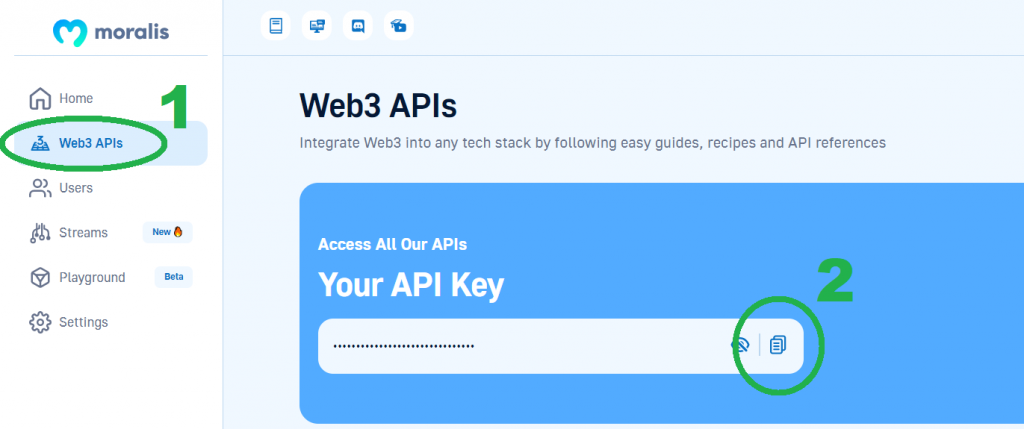
- Start building your dapp and add Web3 authentication or other Web3 functionality.
- Then, you need to make sure your dapp works as it should. For that, we need to access a Sepolia faucet so we can obtain “test” ETH to execute transactions. To do so, visit Moralis’ crypto faucet list:
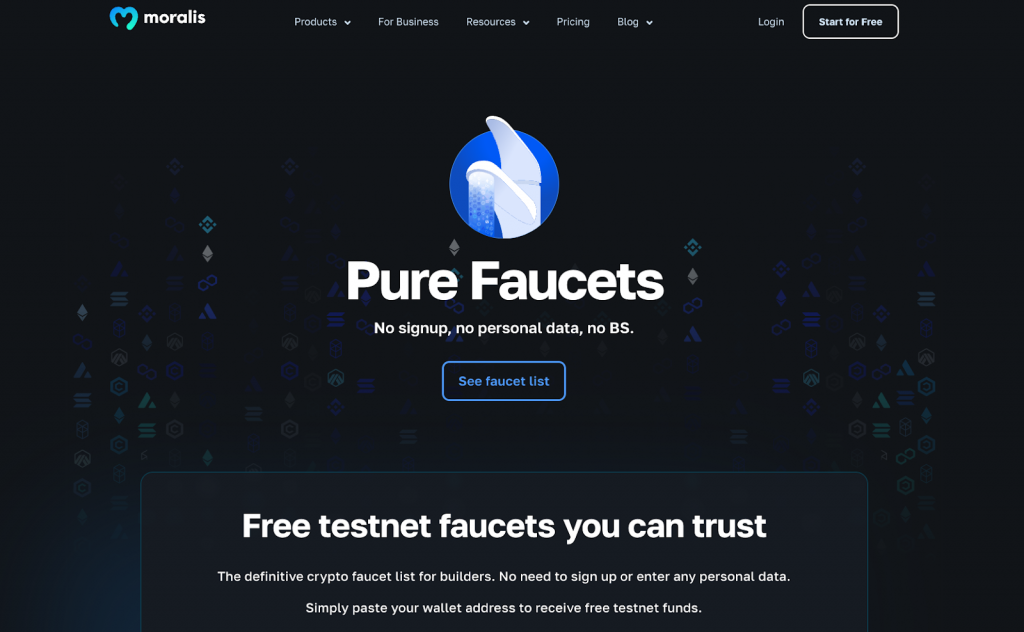
- On that page, click on the “Try Now” button next to “Sepolia Faucet”:
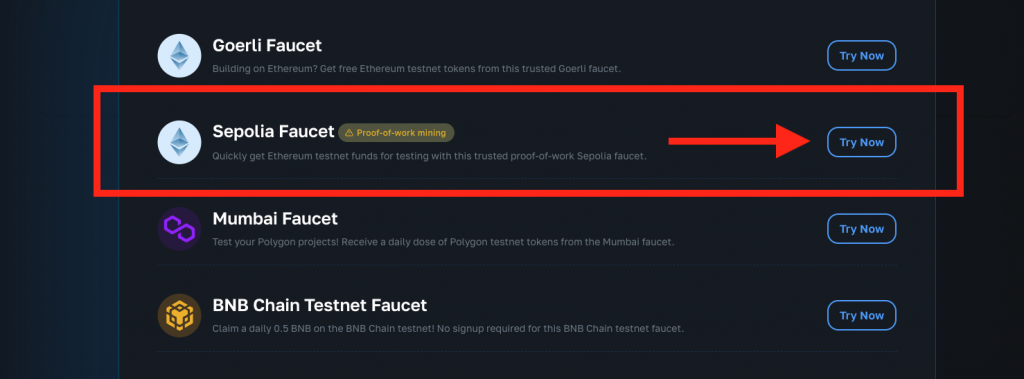
- Now, paste in your wallet address and get testnet ETH from the Sepolia faucet:
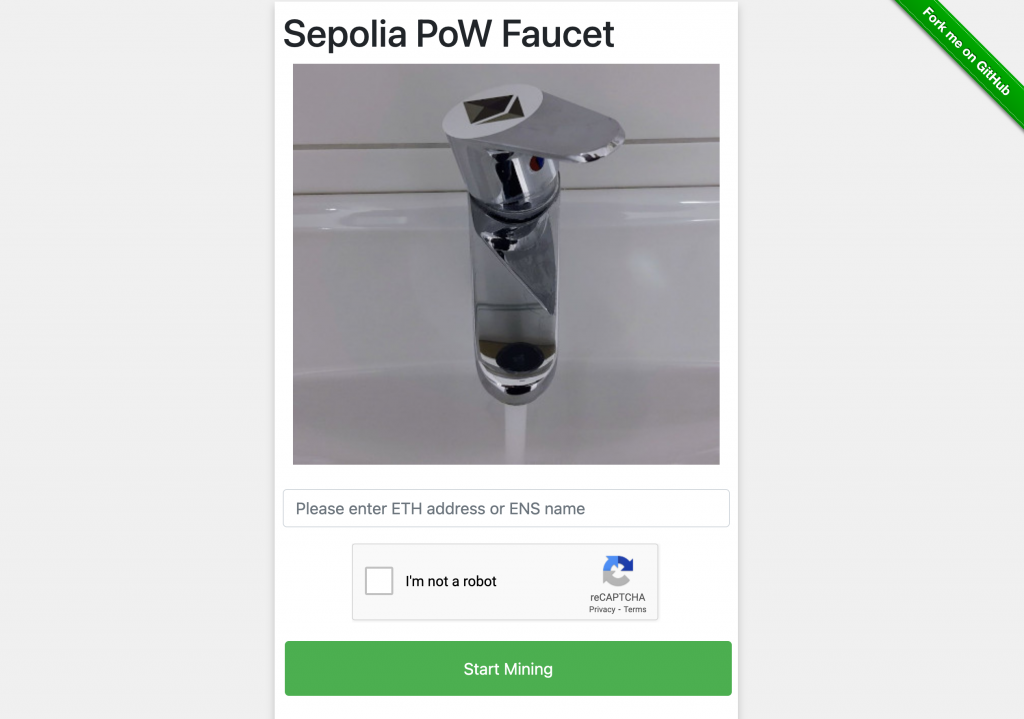
That’s it; that’s how you utilize the Sepolia testnet faucet from Moralis! Now, whether you are interested in dapp development or smart contract programming, learning about testnets and faucets in more detail is crucial. So if you’d like to dive into the practical portion of this guide and see how to use Sepolia for Web3 development, click here. Or, follow along as we explore this extremely popular network further and look at what a Sepolia testnet faucet is!
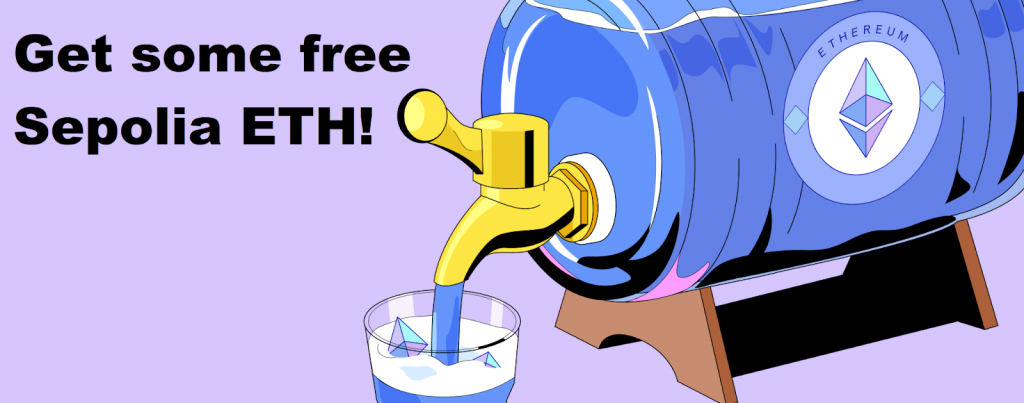
Overview
Before answering the “what is a Sepolia faucet?” and “what is a Sepolia testnet faucet used for?” questions, it’s important to get better acquainted with the Sepolia testnet on Ethereum. Therefore, we’ll initiate this article by exploring the Sepolia testnet. After you’ve learned what a testnet is, we’ll look at how to use Sepolia for Web3 development. Thanks to Moralis, using Sepolia is a straightforward process! What’s more, you can start creating killer dapps (decentralized applications) with a free Moralis account!
As we move forward, we’ll also ensure you understand what a faucet in the crypto space is. Then, you’ll be ready to dive into the “what is a Sepolia testnet faucet used for?” subject. We’ll also highlight some of the key benefits of a Sepolia testnet faucet. Lastly, we will also provide you with a Sepolia faucet list!

Exploring the Sepolia Testnet
Since October 2021 – when the Sepolia testnet was born – it has become one of Ethereum’s leading proof-of-stake (PoS) testnets. In fact, since the beginning of 2023, only two Ethereum testnets have been maintained by the Ethereum Foundation: Sepolia and the Goerli testnet. So, what is the Sepolia testnet? It is an Ethereum testnet suited to the “post-Merge” of Ethereum’s PoS consensus mechanism. Thanks to client developers’ care, Sepolia is a safe and accurate Ethereum testing environment.
The initial version of Sepolia used a proof-of-work (PoW) consensus mechanism since the Ethereum mainnet also used PoW back in 2021. However, in the light of The Merge, Sepolia followed the mainnet’s example and merged with the PoS Sepolia Beacon Chain. So, Sepolia is now, just like Ethereum, a PoS chain. Furthermore, Sepolia is almost an identical copy of Ethereum, so it accurately mimics the mainnet and supports accurate testing. This enables developers to design, create, test, and track their project’s public performance before going live.

What is a Testnet?
A testnet is sort of a “sandbox” blockchain network created and supported by dev communities for the purpose of testing. Accordingly, testnets help developers ensure that network updates are sound and that new smart contracts and dapps run smoothly before deploying them to the mainnet. So, this “sandbox” allows teams to pre-release on the blockchain without jeopardizing the mainnet or risking real funds. Particularly useful are public testnets. After all, everyone can access those, meaning that projects can test public engagement in advance.
If you are new to the blockchain realm, note that every on-chain transaction needs gas. Gas powers transactions and those executing them must cover them using native currencies. For Ethereum, that is ether (ETH). With that in mind, you can imagine that it could be very costly to run tests on mainnets. Aside from unnecessary costs, testing on the mainnet would burden networks that are already way too busy. As such, testnets are an important technical and economical solution for improving the overall developer experience!
We already mentioned this when exploring Sepolia, but it’s worth repeating: testnets should be as identical to their mainnets as possible. Why does this matter? Well, without this resemblance, testing loses proper weight. So, just like mainnets, testnets need to use the same transaction mechanics. Consequently, there are gas fees on public testnets as well. This means testnets need to have their native coins that devs can obtain for free via testnet faucets. You’ll learn more about faucets as we proceed toward the “what is a Sepolia faucet?” topic.
Once you have test coins, you only need a Web3 address and the ability to connect to the network in question. Fortunately, a practical tool such as MetaMask does the trick for Ethereum and other EVM-compatible chains.

How to Use Sepolia for Web3 Development
Moralis – the ultimate enterprise-grade Web3 API provider – is the tool you need when using Sepolia for Web3 development. One of Moralis’ essential properties is its deep-rooted, cross-chain interoperability. As such, you can use powerful and fast Web3 API endpoints across all the leading blockchains, including testnets. Essentially, Moralis is the best way to use Sepolia, among many other mainnets and testnets.

In order for you to be able to act upon the answer to the “what is a Sepolia faucet?” question, let’s look at Moralis’ core products listed below. If you remember, you can use Moralis’ powerful toolbox to test your dapps on Sepolia with a free account.
- Web3 Data API – Enables you to query NFT data, token data, transaction data, block data, DeFi data, and more.
- Auth API – Empowers you to implement Web3 authentication with a single line of code. Then, your dapp’s users can connect using leading Web3 wallets as the gateway into the crypto space with a click of a button.
- Streams API – Allows you to listen to smart contracts and wallets and use real-time, on-chain events to trigger specific features and functionalities of your dapps.
Moralis is also all about cross-platform interoperability. It supports all the leading Web2 dev platforms and programming languages/frameworks. As such, you can become a dapp developer using your existing legacy skills. For instance, if you know JavaScript, you’ll be able to use NodeJS and ReactJS/NextJS to create dapps. Also, thanks to Moralis’ Web3 APIs, you can cover Web3 functionalities and fetch any on-chain data with single lines of code.
Moralis and the Sepolia Testnet
As you start working with the snippets of code from Moralis, you’ll be able to focus on Sepolia by using its chain ID. In many cases, you can also focus on Sepolia by simply replacing the default “EvmChain.ETHEREUM” with “EvmChain.SEPOLIA“.

Another option is to set Sepolia as your default chain. You can do so with the snippet of code below:
import Moralis from 'moralis';
import { EvmChain } from '@moralisweb3/common-evm-utils';
Moralis.start({
apiKey: 'YOUR_API_KEY',
defaultEvmApiChain: EvmChain.SEPOLIA
})
You’ll also be working with the API reference pages in the Moralis documentation. There, you can select “sepolia” or “0xaa36a7” (the Sepolia chain ID in HEX):
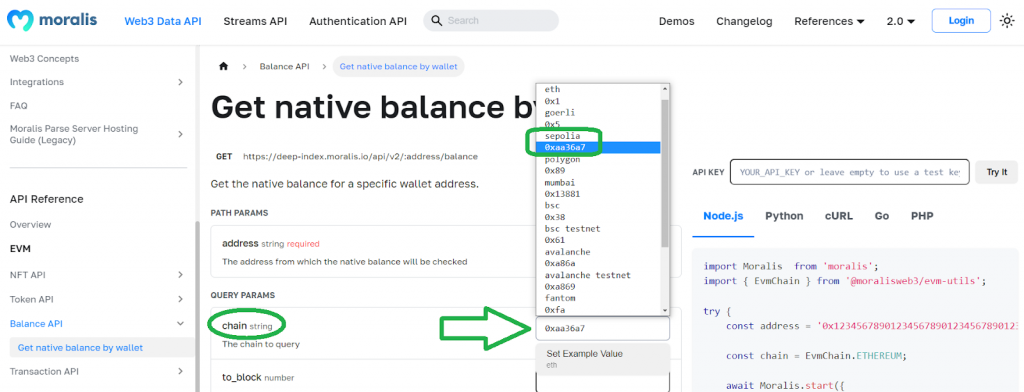
One of the ways to use Moralis’ Streams API is through your Moralis dashboard. In that case, you only need to toggle the “Sepolia” option in the “Select Networks” step of your stream configuration:
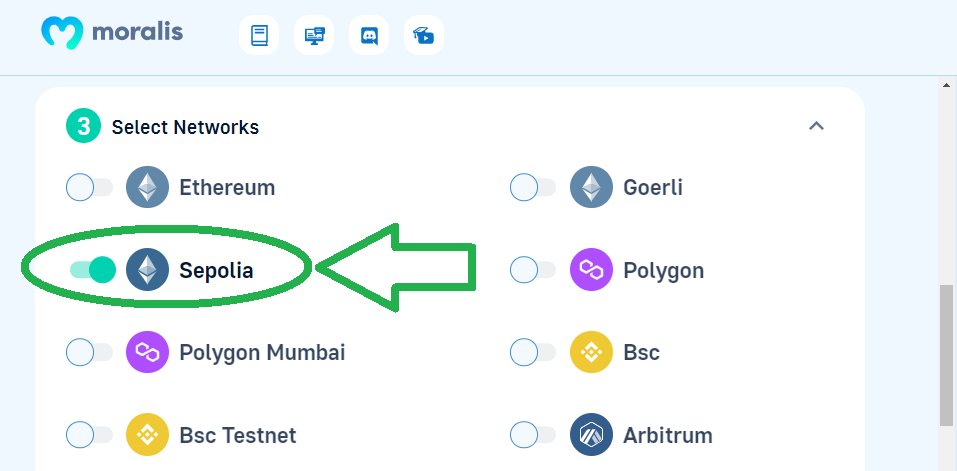
If you are ready to start creating dapps and testing them on Sepolia or any other supported network, create your free Moralis account. Then, obtain your Moralis API key and start “BUIDLing”! However, before you get your hand dirty, don’t forget to dive into the “what is a Sepolia faucet?” topic below.
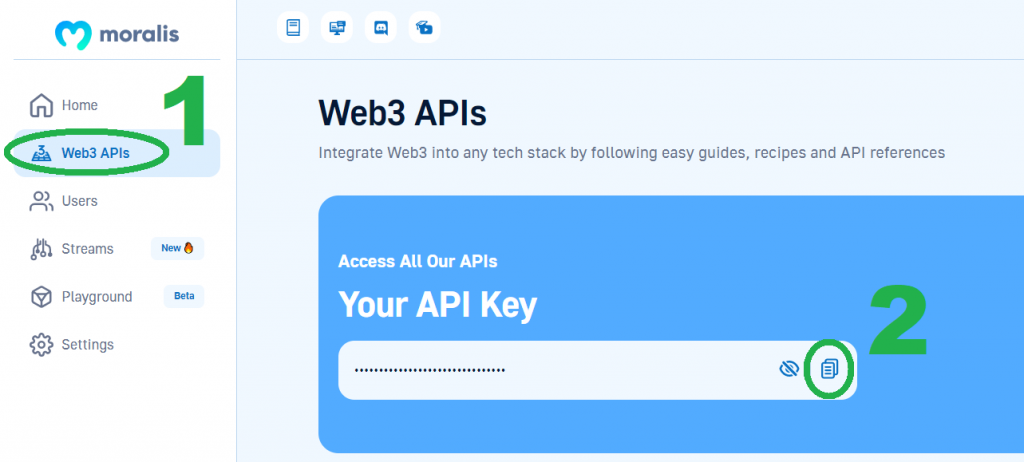
What is a Faucet?
A faucet is a simple Web3 dev tool that provides a small amount of cryptocurrency native to its testnet. Testnet faucets are essential as they provide devs with the funds to cover testing transactions on open testnets. Typically, crypto faucets come in the form of web applications. These apps usually have an entry field where you can paste your wallet address. In some cases, they require you to connect your Web3 wallet. Then, to receive testnet tokens in your wallet, you usually need to click on a confirmation button.
Sometimes faucets work in combination with social platforms, mainly Twitter and Discord. In that case, you may be asked to make a post/tweet or perform some other action to receive free test coins.
Now that you know what a blockchain faucet is, you’re ready to learn what a Sepolia testnet faucet is and what it is used for. After we’ve covered that, we’ll look at the benefits of this neat dev tool.

What is a Sepolia Faucet, and What is it Used For?
By this point, you’ve learned what a testnet is and what a testnet faucet is. As such, let’s dig into the main topic of this article and provide you with the most to-the-point answers regarding what a Sepolia faucet is and what a Sepolia testnet faucet can be used for.
- What is a Sepolia faucet? A Sepolia faucet is a crypto faucet that serves the Sepolia testnet. It is a simple Web3 application or a tool that supplies small amounts of Sepolia ETH (Sepolia’s native coin) for free. These testnet tokens mimic the functionality real ETH has on the Ethereum mainnet.
- What is a Sepolia testnet faucet used for? A Sepolia testnet faucet serves devs or anyone with an Ethereum address to obtain Sepolia ETH. Essentially, it is used to get test coins and allows developers to pay for transactions on the Sepolia testnet. This supports dapp and smart contract devs’ ability to perform tests in an Ethereum-like environment.
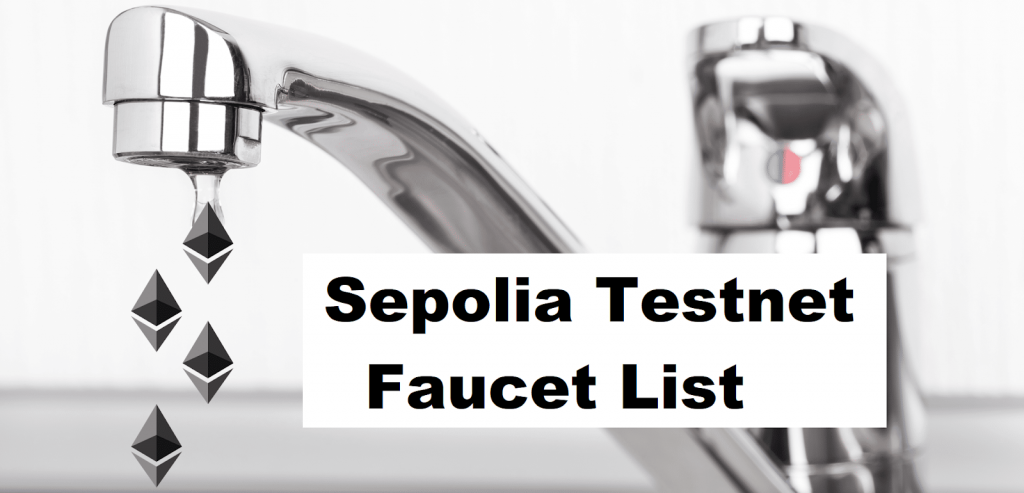
Benefits of a Sepolia Testnet Faucet
The benefits of a reliable Sepolia testnet faucet are multi-fold. On the one hand, this particular type of faucet adopts the general benefits of testnet faucets and testnets. It is a key that enables devs to test mainnet updates and dapps and run test transactions. Furthermore, all dapp developers benefit from obtaining free test tokens, which is, in this case, Sepolia ETH. On the other hand, Sepolia has some unique characteristics. This is why the Ethereum Foundation recommends Sepolia as the primary testnet for dapp development on Ethereum.
Sepolia utilizes a permissioned set of validators that must run nodes. Because this testnet is relatively new, its state and history are relatively small. Therefore, it doesn’t require a lot of storage to run a Sepolia node. This smaller size also means that the network can sync quickly. So, if you want to interact directly with the network, you can quickly spin up a node. This brings us to three key benefits of the Sepolia testnet:
- Fast syncing
- A closed set of validators
- Smaller blockchain state and history
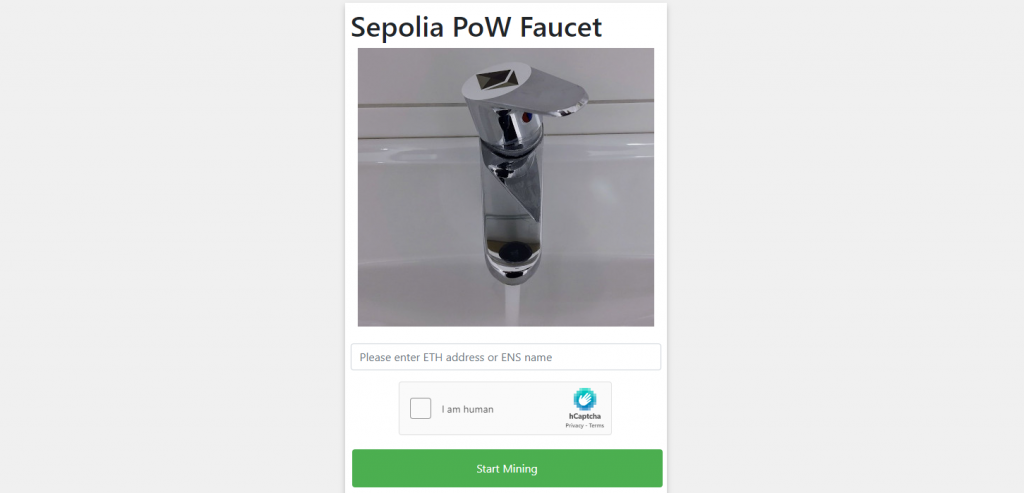
Note: To learn about the main differences between Sepolia and Goerli – the two active Ethereum testnets – follow the “what is the Sepolia testnet?” link in the “Exploring the Sepolia Testnet” section above.
Sepolia Faucet List
Note: Please keep in mind that we do not control or in any way associate with the Sepolia testnet faucets below. We can’t confirm if they are all safe at the time you decide to use them. After all, faucets can update/change. This can make them unsafe or turn their rules of requirements so that they become unfriendly. The only testnet faucets we can vouch for are the ones on the other side of the “testnet faucets” link.
The following is our Sepolia faucet list:
- sepolia-faucet.pk910.de/
- fauceth.komputing.org
- sepoliafaucet.net
- faucet.sepolia.dev/
- faucet-sepolia.rockx.com/
- collect-test-eth.org/
- allthatnode.com/faucet/ethereum.dsrv
- web.getlaika.app/faucets
- faucet.triangleplatform.com/ethereum/sepolia
If you want to access any of the above Sepolia faucets, simply enter “https://” followed by any of the above addresses in your favorite browser. But remember that, in some cases, you may need to connect your Web3 wallet. This means that you’ll need to use a browser that has your MetaMask extension set in place.
Sepolia Testnet Faucet – What is a Sepolia Faucet? – Summary
If you covered the above sections, you are now able to answer the “what is a Sepolia faucet?” and “what is a Sepolia testnet faucet used for?” questions with confidence. You know that you need a Sepolia faucet to get Sepolia ETH, which you can use to power test transactions. This means you can test your dapps and smart contracts on an Ethereum-like testnet before deploying them on the mainnet. You also learned that you can use Moralis’ Web3 API to create all sorts of dapp effortlessly. Among many mainnets and testnets, this Web2-Web3 bridging toolset also supports Sepolia. So, it’s now up to you to use this information to build some awesome dapps!
If you need additional guidance or ideas, make sure to explore the Moralis documentation. With this single resource, you can learn Web3 programming through practice. Of course, there’s also our blockchain development YouTube channel and our crypto blog, both offering a ton of valuable content. This includes various topics and tutorials that can teach how to get contract logs, how to mint from Etherscan, how to get transaction details by hash, and many other practical things. Our blog is also the place to cover more theoretical subjects, such as “what is danksharding?“. You can also take a more professional approach to your crypto education by enrolling in Moralis Academy. In that case, starting with blockchain and Bitcoin fundamentals is the best way to go.
